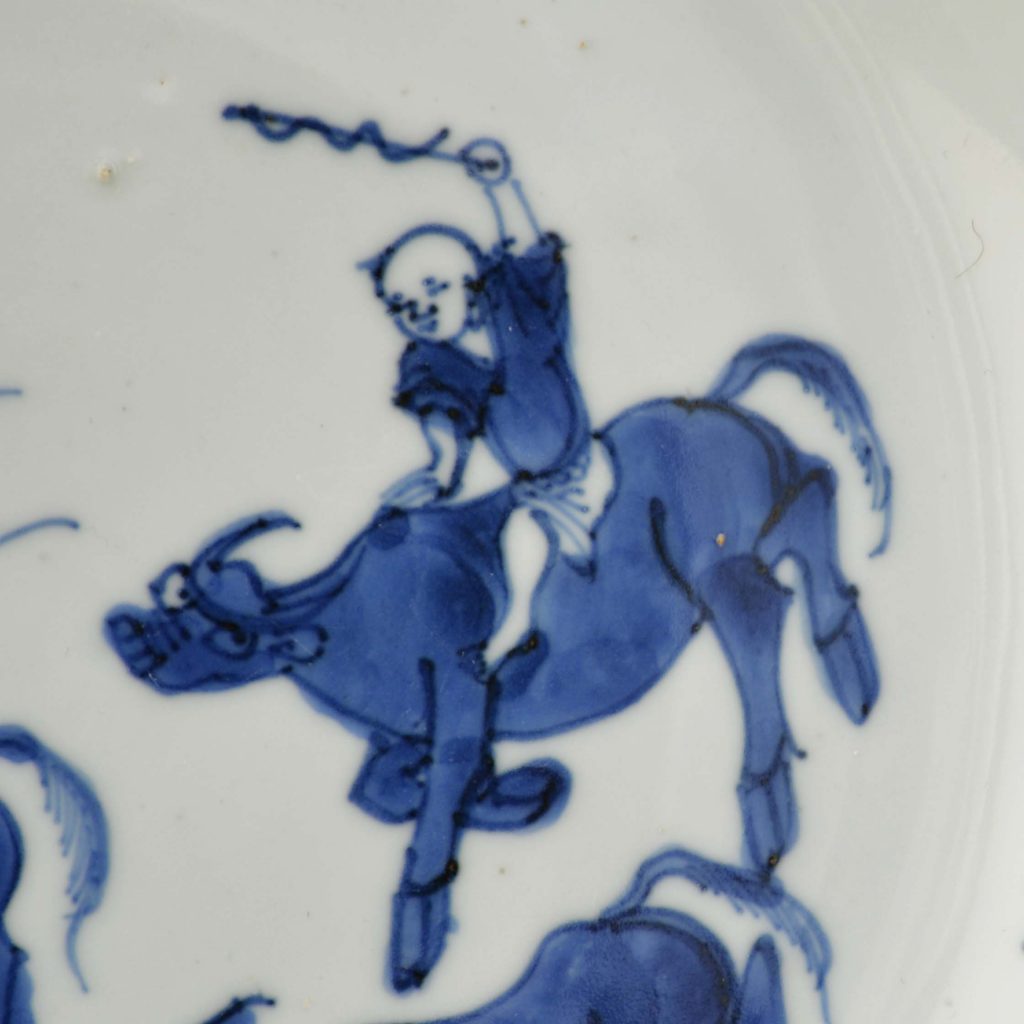
Ming Porcelain Dish For the Japanese Market, Tianqi or Chongzhen 1621 – 1644
A Ming Blue and White Porcelain Dish, Tianqi (1621-1627) or Chongzhen (1627-1644) Made for the Japanese Market c.1620-1630. This Chinese dish made in the Ming dynasty would have been used in Japan for the Kaieski, the Tea Ceremony meal. It depicts a young buffalo herder raising his whip to move a buffalo on that has turned around to look at him. The other two buffalo seem quite content to carry on where they are supposed to be going.
RESERVED
- Condition
- In excellent condition but with typical mushikui fritting.
- Size
- Diameter : 21 cm (8 1/4 inches)
- Provenance
- N/A
- Stock number
- 24672
Information
Ko-Sometsuke :
Ko-Sometsuke, meaning `Old Blue and White` is a term used to describe Chinese blue and white porcelain made for Japan. This late Ming porcelain was made from the Wanli period (1573-1620) and ended in the Chongzhen period (1628-1644), the main period of production being the 1620`2 and 1630`s. The porcelain objects produced were made especially for the Japanese market, both the shapes and the designs were tailored to Japanese taste, the production process too allowed for Japanese aesthetics to be included in the finished object. Its seams firing faults were added, repaired tears in the leather-hard body were too frequent to not, in some cases, be deliberate. These imperfections as well as the fritting Mushikui (insect-nibbled) rims and kiln grit on the footrims all added to the Japanese aesthetic. The shapes created were often expressly made for the Japanese tea ceremony meal, the Kaiseki, small dishes for serving food at the tea ceremony are the most commonly encountered form. Designs, presumably taken from Japanese drawings sent to China, are very varied, often using large amount of the white porcelain contrasting well with the asymmetry of the design.
Boy on Buffalo :
The water buffalo (Bubalis Arnee) is native to Asia where 97% of the worlds population live. It is an important beast of burden in China, especially the south of the country where it is used for ploughing the semi-aquatic rice fields of the region. It is also used for it`s meat as well as it`s milk and is sacrificed at some festivals. It is a large heavy tough animal, that is powerful despite only needing poor feed. In China a small boy, sometimes playing a flute, on top of a buffalo represents the submission of wild power to a child. For a Transitional blue and white porcelain bowl depicting a version of this design and inscribed with a poem reading "A Young Shepard Rides on the Back of a Buffalo Going Home" "Blowing a no Name Melody Freely and Randomly with a Short Flute." see `Sold Items` stock number 21204. Designs with a boy on a buffalo can also be found on English soft-paste porcelain of the 18th century as well as late 18th and early 19th century English and Welsh transfer printed blue and white pottery. These designs are referred to to as `The Boy on the Buffalo Pattern`.



